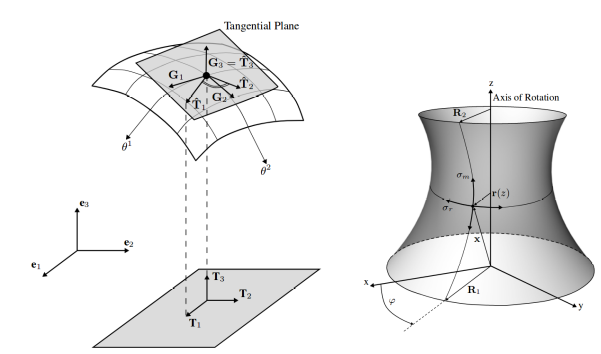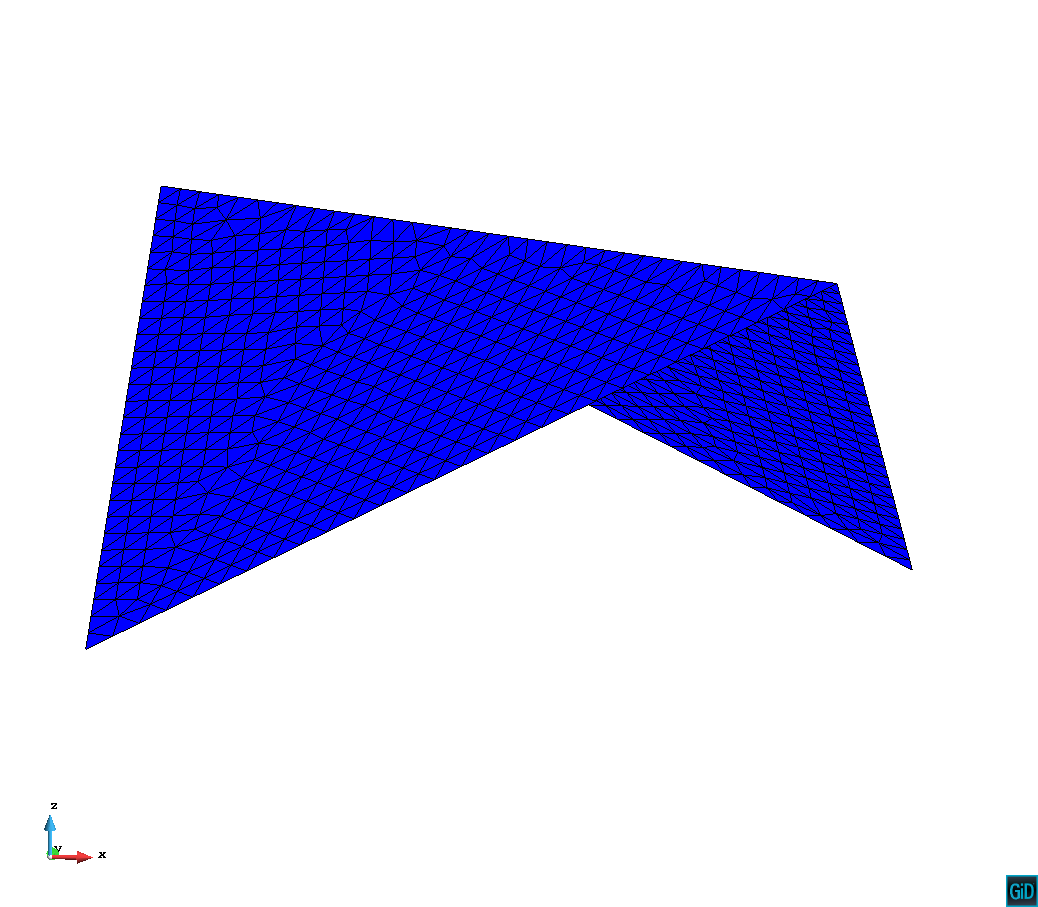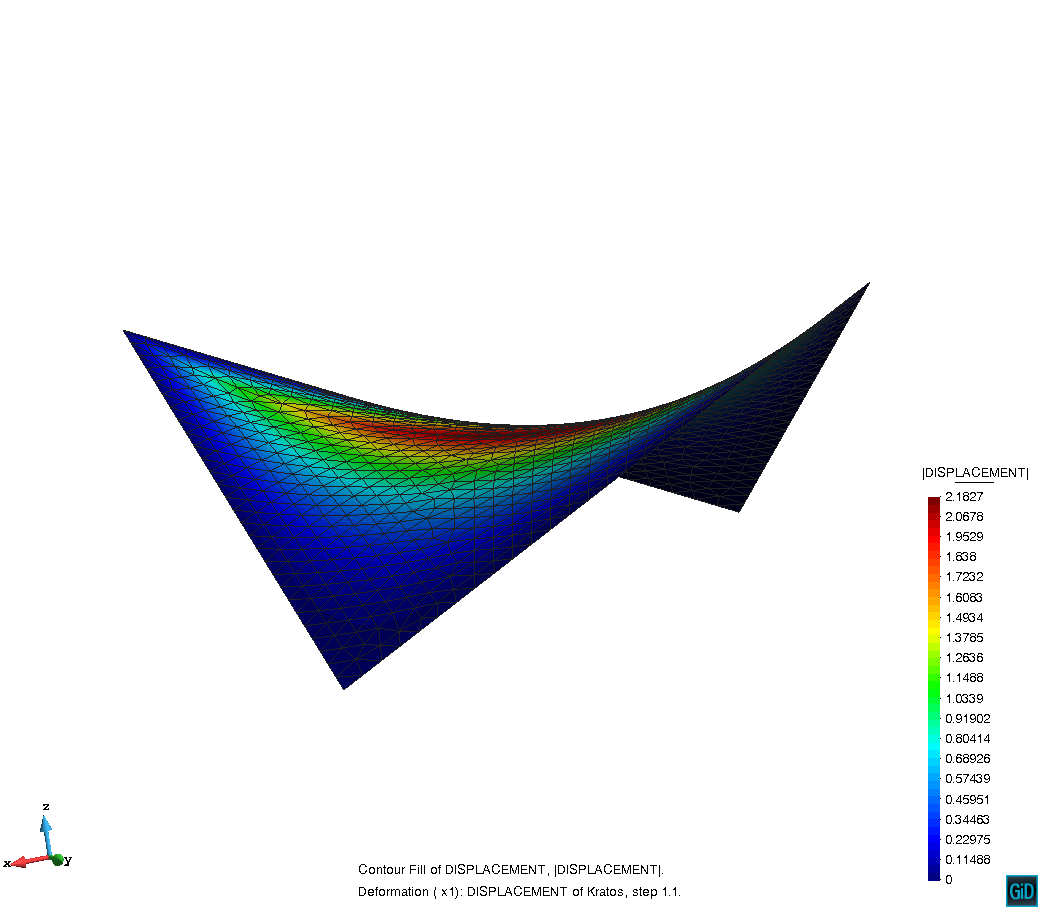Anna Rehr
This page describes the simulation of prestressed membranes (isotropic and anisotropic) for analysis and formfinding which is implemented in the StructuralMechanicsApplication. The prestressed membrane element (prestressed_membrane_element.h) is designed in such a way that it is suitable for both formfinding and membrane analysis. The prestress can either be read from a .mdpa file (which could for example result from a formfinding analysis) or from a projection (planar or rotational, see picture). The prestress, the projection type and the projection direction(s) are defined in the material. The projection of the prestress is executed by the method ProjectPrestress. The distinction between formfinding and membrane analysis is set by the value IS_FORMFINDING. If IS_FORMFINDING = True, the update reference strategy is applied where the base vectors are updated in each nonlinear iteration (Method: ComputeBaseVectors). In the case of prestress adaption, the prestress is updated in the method UpdatePrestress. The formfinding analysis is executed in `formfinding_updated_reference_strategy.hpp<´. In order to use the formfinding strategy the following parameters have to be included in the parameter input file. In order to use the result of a formfinding analysis for further simulations, the necessary information (whole modelpart or prestress data) can be printed in an output file using the formfinding_io_process. The same process can be used in subsequent simulations to read the prestress data. The following Figures show an example where the formfinding is executed for a 4-point-sail. Isotropic prestress is applied by a planar projection. The first Figure shows the original geometry and the second Figure the formfinding result.
 |
Fig.1: Projection types.
Fig.2: Original geometry of the 4-point sail.
Fig.3: Result after formfinding.
References
| [1] |
Hartmut, F.
Numerical Methods for the Design and Analysis of Tensile Structures.
PhD Thesis, 2014. |
| [2] |
Wüchner, R.
Mechanik und Numerik der Formfindung und Fluid-Struktur-Interaktion von Membrantragwerken
PhD Thesis, 2006. |



